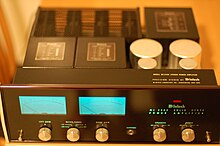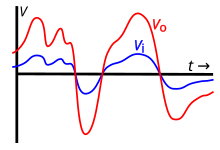Introduction and History of Amplifiers
– Amplification is the process of increasing the amplitude of a time-varying signal.
– An amplifier is an electronic device that can increase the magnitude of a signal.
– It is a two-port electronic circuit that uses power from a power supply to amplify the signal.
– Amplification is fundamental to modern electronics and widely used in electronic equipment.
– The first practical amplifier was the triode vacuum tube, invented in 1906 by Lee De Forest.
– Vacuum tubes were used in almost all amplifiers until the 1960s-1970s when transistors replaced them.
– Vacuum tubes revolutionized electrical technology and enabled various applications like long-distance telephone lines and radio broadcasting.
– Early tube amplifiers had high distortion levels until Harold Black developed negative feedback in 1934.
– The first working transistor was invented in 1947 by John Bardeen and Walter Brattain.
– The bipolar junction transistor (BJT) was invented by William Shockley in 1948.
– The metal–oxide–semiconductor field-effect transistor (MOSFET) was invented in 1959.
– Transistors replaced vacuum tubes, leading to a revolution in electronics and the development of portable devices.
– Integrated circuits based on transistors allowed for higher scales of integration in amplifiers.
Amplifier Types
– Audio amplifiers amplify signals in the audio range of less than 20kHz.
– RF amplifiers amplify frequencies in the radio frequency range between 20kHz and 300GHz.
– Servo amplifiers and instrumentation amplifiers may work with very low frequencies down to direct current.
– Preamplifiers precede other signal processing stages in the signal chain.
– Power amplifiers provide enough output power for the final use of the signal.
Applications of Amplifiers
– Amplifiers are used in various applications such as telephony, public address systems, radio broadcasting, and radar.
– They are essential for audio recording, television, and the operation of computers.
– Amplifiers enabled the development of long-distance telephone lines and talking motion pictures.
– Vacuum tubes were widely used in consumer electronic devices for 50 years.
– Transistors allowed for the miniaturization of amplifiers and the creation of portable electronic devices.
Properties and Categories of Amplifiers
– Amplifier properties include gain, bandwidth, efficiency, linearity, noise, output dynamic range, slew rate, rise time, settling time, ringing, overshoot, and stability.
– Gain can be specified as the ratio of output voltage to input voltage, output power to input power, or a combination of current, voltage, and power.
– Most amplifiers are designed to be linear, providing constant gain for any normal input level and output signal.
– Negative feedback is used in most modern amplifiers to increase bandwidth, reduce distortion, and control gain.
– All amplifiers include an active device for amplification.
– Active devices can be vacuum tubes, discrete solid-state components like transistors, or integrated circuits like op-amps.
Specific Types and Functions of Amplifiers
– Power amplifiers increase power available to a load.
– Operational amplifiers (op-amps) have high open loop gain and differential inputs.
– Distributed amplifiers use balanced transmission lines to achieve higher bandwidth.
– Switched mode amplifiers are nonlinear amplifiers with higher efficiencies than linear amps.
– Negative resistance amplifiers are regenerative amplifiers that use feedback to transform impedance.
– Amplifiers can be classified based on the phase relationship of the input signal to the output signal.
– Servo amplifiers actively control the output at a desired level.
– Amplifiers have different characteristics depending on their design and application.
– Interstage coupling methods include resistive-capacitive (RC) coupled, inductive-capacitive (LC) coupled, transformer coupled, and direct coupled amplifiers. Source: https://en.wikipedia.org/wiki/Electronic_amplifier#Common_terminal
An amplifier, electronic amplifier or (informally) amp is an electronic device that can increase the magnitude of a signal (a time-varying voltage or current). It is a two-port electronic circuit that uses electric power from a power supply to increase the amplitude (magnitude of the voltage or current) of a signal applied to its input terminals, producing a proportionally greater amplitude signal at its output. The amount of amplification provided by an amplifier is measured by its gain: the ratio of output voltage, current, or power to input. An amplifier is defined as a circuit that has a power gain greater than one.


An amplifier can be either a separate piece of equipment or an electrical circuit contained within another device. Amplification is fundamental to modern electronics, and amplifiers are widely used in almost all electronic equipment. Amplifiers can be categorized in different ways. One is by the frequency of the electronic signal being amplified. For example, audio amplifiers amplify signals in the audio (sound) range of less than 20 kHz, RF amplifiers amplify frequencies in the radio frequency range between 20 kHz and 300 GHz, and servo amplifiers and instrumentation amplifiers may work with very low frequencies down to direct current. Amplifiers can also be categorized by their physical placement in the signal chain; a preamplifier may precede other signal processing stages, for example, while a power amplifier is usually used after other amplifier stages to provide enough output power for the final use of the signal. The first practical electrical device which could amplify was the triode vacuum tube, invented in 1906 by Lee De Forest, which led to the first amplifiers around 1912. Today most amplifiers use transistors.



